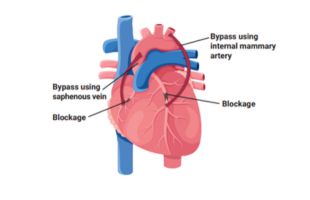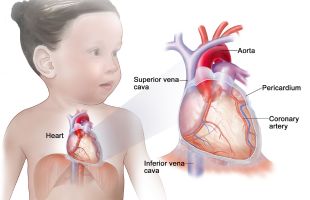The field of heart surgery plays a crucial role in managing and treating cardiovascular disorders, ultimately aiming to enhance the overall health and well-being of individuals with heart-related conditions.

Coronary Artery Bypass Grafting (CABG)
Coronary Artery Bypass Grafting (CABG) is a surgical procedure commonly employed to address coronary artery disease, a condition characterized by blocked or narrowed coronary arteries restricting blood flow to the heart muscle. The surgery involves creating alternative pathways for blood circulation by grafting blood vessels from other parts of the body, typically the leg or chest.
- CABG is performed to treat coronary artery disease by creating alternative pathways for blood flow around blocked or narrowed coronary arteries.
- Surgeons use grafts, often from the patient's own blood vessels, such as the internal mammary artery, radial artery, or saphenous vein, to bypass the obstructed coronary artery.
- It is recommended for individuals with severe coronary artery disease who haven't responded well to other treatments.
- Advancements allow for less invasive procedures, resulting in smaller incisions, faster recovery, and reduced complications.
- After CABG, patients undergo recovery with medications, lifestyle adjustments, and cardiac rehabilitation to promote heart health.
- CABG is highly effective in relieving symptoms, improving quality of life, and enhancing long-term survival for patients with severe coronary artery disease.

Valve Repair Surgery
Valve repair surgery is a medical procedure designed to address issues with the heart valves, which can become damaged or dysfunctional due to conditions such as valve stenosis (narrowing) or regurgitation (leaking). Instead of replacing the valve, this surgery aims to restore proper valve function through repair techniques.
- Valve repair surgery is typically recommended when heart valves, including the aortic or mitral valves, are not functioning correctly due to diseases, congenital abnormalities, or infections.
- Surgeons employ various techniques to repair valves, such as resizing, reshaping, or reconstructing the valve leaflets, chordae tendineae, or annulus to restore proper valve function.
- Valve repair is often preferred over valve replacement as it preserves the patient's natural valve and can result in better long-term outcomes, decreased risks of complications, and avoidance of the need for lifelong anticoagulation.
- Common indications for valve repair include mitral valve prolapse, congenital valve abnormalities, and certain cases of aortic or tricuspid valve dysfunction.
- Advancements in surgical techniques allow for minimally invasive valve repair procedures, which can lead to shorter recovery times and reduced postoperative discomfort.
- After valve repair surgery, patients undergo a period of recovery and follow-up care to ensure the success of the procedure. Medications and lifestyle modifications may be recommended.

Valve Replacement Surgery
Valve replacement surgery is a medical procedure performed to address dysfunctional heart valves by replacing them with artificial or biological substitutes. This surgery becomes necessary when heart valves, such as the aortic or mitral valves, are severely damaged or diseased, affecting the heart's ability to function properly.
- Valve replacement surgery is performed to address severe damage or dysfunction of heart valves, restoring proper blood flow.
- It is recommended when valves exhibit significant stenosis or regurgitation, impacting the heart's function.
- Replacement valves can be mechanical (durable but require lifelong anticoagulation) or biological (derived from human or animal tissues, may not require long-term anticoagulation).
- The surgery can be conducted through open-heart procedures or minimally invasive techniques, depending on the patient's health and the specific valve being replaced.
- After surgery, patients undergo recovery with medications, follow-up appointments, and potential cardiac rehabilitation to monitor the new valve's functionality.
- While the surgery carries risks such as infection and bleeding, it provides substantial benefits by restoring proper blood flow, relieving symptoms, and improving overall heart function.

Surgery for A Hole in the Heart
Surgery for a hole in the heart, medically known as atrial or ventricular septal defect repair, involves closing abnormal openings between the heart chambers. These defects, present at birth, can lead to improper blood flow and strain on the heart.
- Repair surgery is recommended for atrial or ventricular septal defects causing symptoms or complications.
- Involves patching or stitching the hole in the heart wall, with techniques based on the defect's size and location.
- Some cases allow for less invasive approaches, potentially leading to shorter recovery times.
- Surgery timing depends on factors such as defect size, symptoms, and overall health. Smaller defects may close on their own.
- After surgery, patients undergo recovery with monitoring, medications, and follow-up appointments.
- Successful closure allows most individuals to lead normal lives; regular follow-up is crucial for monitoring cardiac health.

Surgery for Tumour in Heart/Chest
Surgery for a tumor in the heart or chest involves the removal of abnormal growths within the cardiac or thoracic region. This procedure is crucial for treating tumors that may affect the heart, blood vessels, or surrounding tissues.
- Surgery is recommended when tumors are identified in the heart or chest, affecting normal cardiac function or posing risks of complications.
- The surgical procedure involves removing the tumor, and the extent of resection depends on factors such as tumor size, location, and characteristics.
- Surgeons may use traditional open-heart surgery or minimally invasive approaches, depending on the tumor's nature and location.
- In some cases, a biopsy may be performed during surgery to determine the tumor's nature and guide further treatment.
- After tumor removal, patients undergo a recovery period with monitoring, medications, and follow-up appointments to ensure optimal healing and address any potential complications.
- Treatment often involves collaboration with oncologists, radiologists, and other specialists to develop a comprehensive care plan.

Surgery for irregular heart beat
Surgery for an irregular heartbeat, or cardiac arrhythmia, may be recommended when medications or other interventions are ineffective in managing the condition. This surgical approach typically involves procedures to restore a normal heart rhythm.
- Surgery is considered for individuals with persistent and problematic irregular heart rhythms that impact the heart's ability to pump blood effectively.
- A common surgical intervention is catheter ablation, where a catheter is used to target and destroy abnormal electrical pathways in the heart causing the arrhythmia.
- In cases of atrial fibrillation, the maze procedure is performed to create controlled scar tissue patterns in the atria, redirecting electrical impulses and restoring a regular rhythm.
- Some arrhythmias may be managed with implantable devices like pacemakers or defibrillators, regulating heart rhythm and providing electrical signals when needed.
- Advancements allow for minimally invasive surgeries, reducing recovery times and complications compared to traditional open-heart procedures.
- Following surgery, patients undergo a recovery period with monitoring, medications, and follow-up appointments to ensure the success of the procedure and manage any potential complications.